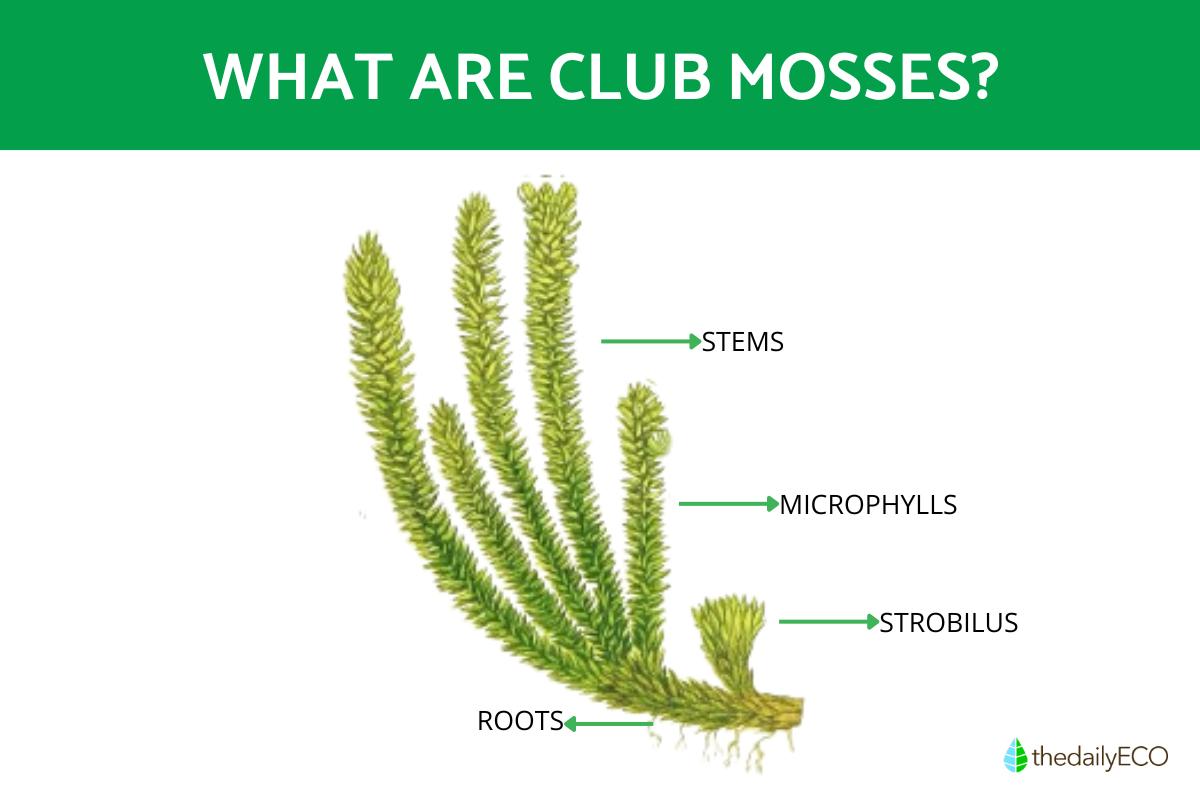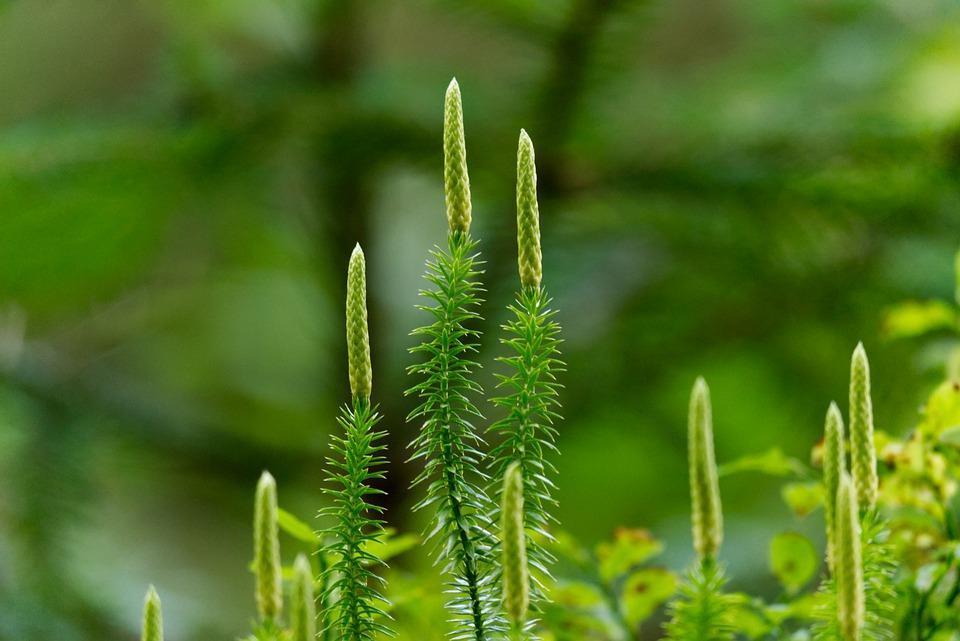What Are Club Mosses? - Definition and Characteristics


Club mosses, also known as lycopodia, are a fascinating group of ancient vascular plants. They're not true mosses, despite the name, but a separate lineage that dates back hundreds of millions of years. Club mosses are living examples of a very early plant design, thriving on Earth for much longer than flowering plants.
The following article by thedailyECO explores what club mosses are, their main characteristics, ecological importance and much more.
What are club mosses or Lycopodium?
Club mosses, or Lycopodium, are a distinct group of vascular plants within the Lycopodiaceae family. Unlike ferns and their relatives, club mosses have a separate evolutionary lineage stretching back hundreds of millions of years.
Their body plan is quite different from typical plants. Instead of tall stems and large leaves, club mosses have creeping or upright stems that often branch in a dichotomous pattern, meaning they fork into two equal parts at regular intervals.
These slender stems are covered in microphylls, which are essentially tiny scales instead of true leaves. While less efficient for photosynthesis, microphylls help conserve water, a key adaptation for their preferred moist, shaded environments.
Reproduction in club mosses is also unique. They use spores for reproduction, similar to ferns. However, unlike ferns, club mosses lack specialized structures called sporophylls to house these spores.
The Lycopodium genus encompasses over 40 known species, demonstrating surprising adaptability. While they typically prefer moist, shaded areas with rich soil, these tough plants can be found in various habitats, from urban parks to dense forests.
Interestingly, some club moss species have been used in traditional medicine. However, it's important to note that the effectiveness and safety of these uses lack strong scientific evidence. The potential benefits and risks can vary significantly depending on the specific species and its preparation method.
Is club moss a fern?
Club moss and ferns, though similar and often inhabiting similar environments, are different. Club mosses are older than ferns (pteridophytes) and lack the specialized spore structures (sporophylls) ferns have. They also have simpler leaves (microphylls) and often branching stems, unlike ferns' single main stem with fronds.
Intrigued by ancient plants? Dive deeper into the world of cone-bearing evergreens like pines and firs in our related article.

Origins and evolution of club mosses
Club mosses are considered one of the oldest surviving lineages of vascular plants on Earth, dating back to the Silurian period over 400 million years ago.
The fossil record provides a glimpse into the evolutionary journey of club mosses. Early plants, known as lycophytes, were much larger and more diverse than their modern counterparts. These giant plants dominated the Carboniferous period (359 to 299 million years ago), forming vast forests that eventually contributed to the formation of coal deposits.
Over time, they faced extinction events and environmental changes. Modern club mosses represent a small remnant of this once-dominant group. Despite this, they exhibit several key evolutionary adaptations that have allowed them to persist for millions of years. These adaptations include:
- Microphylls: club mosses have small, scale-like leaves called microphylls. While not as efficient for photosynthesis as the larger leaves of other plants, microphylls help to reduce water loss in dry environments.
- Rhizophores: these root-like structures help club mosses anchor themselves to the ground and absorb water and nutrients from the soil.
- Vegetative reproduction: in addition to spore reproduction, many club mosses can reproduce vegetatively by spreading underground stems or runners. This allows them to form large colonies and colonize new areas.
These adaptations have enabled club mosses to survive in a wide range of habitats and persist through changing environments. Learn more about rapid evolution in this other article.

Characteristics of club mosses
Club mosses, also known as ground pines or creeping cedars, possess a fascinating array of unique characteristics:
- Club mosses have a long evolutionary history and are considered some of the oldest vascular plants on Earth. They have existed for millions of years, dating back to prehistoric times.
- Club mosses have a simple yet effective system for transporting water within their tissues. They utilize structures called tracheids, which are primitive vascular cells that help in water conduction throughout the plant.
- Club mosses exhibit remarkable diversity in their growth patterns. Unlike plants with a single main stem, they can be upright up to 30 cm (12 inches) with branching stems, or they can take on various other forms. Some species are herbaceous (non-woody), forming low-growing mats. Others grow in bushy clumps, while some species are climbing vines, using special structures to grip onto other plants for support. Still others exhibit a creeping growth habit, with stems that spread horizontally along the ground. This remarkable adaptability allows them to thrive in a wide range of environments.
- Club mosses have roots that branch dichotomously, meaning they split into two equal branches at each fork. These adventitious roots serve as anchors in their diverse habitats, providing stability and nutrient uptake.
- Reproduction in club mosses occurs through spores, which are small reproductive structures with thin cell walls. These spores are typically yellowish in color due to their low chlorophyll content. They are dispersed into the environment, where they can germinate and develop into new plants under suitable conditions.
- Club mosses are found in a wide range of habitats, including temperate and tropical regions, as well as alpine and mountainous terrain. They thrive in moist environments with rich soil and ample shade.
- Club mosses exhibit a fascinating reproductive strategy known as homospory. This means that their sexual spores have uniform morphology, simplifying the process of reproduction compared to heterosporous plants.
- Reproduction in club mosses involves a complex symbiotic relationship with fungi. Spores rest for a year before germinating, and they require the presence of specific fungi for future development. This process, known as mycorrhizal symbiosis, can take up to 15 years to complete.
- Some club mosses species contain alkaloids that deter herbivores, offering them a degree of protection.
Captivated by club mosses? Explore another ancient marvel, hornworts.
Ecological importance of club mosses
Club mosses play crucial ecological roles in their respective habitats, contributing to the overall functioning and resilience of ecosystems. This section explores the various ways club mosses contribute to healthy ecosystems.
Club mosses contribute to the breakdown and recycling of nutrients in the environment. Their decomposing leaves and stems release essential nutrients like nitrogen, phosphorus, and potassium back into the soil, making them readily available for other plants.
The creeping and mat-forming growth habits of many club mosses species help to prevent soil erosion. Their dense network of stems and roots binds soil particles together, reducing the impact of wind and water runoff, especially on slopes and in fragile ecosystems.
These plants contribute to the overall resilience of ecosystems by providing a stable, healthy environment for other organisms. Their presence can help to maintain soil moisture and regulate temperature fluctuations, creating a more favorable environment for a variety of plant and animal life.
Many club mosses have a fascinating symbiotic relationship with arbuscular mycorrhizal fungi (AM fungi). These fungi colonize the roots of the plant and help them absorb essential nutrients, particularly phosphorus, from the soil. In return, the fungi receive sugars produced by the plant through photosynthesis. This mutually beneficial partnership allows both organisms to thrive in environments where resources might be limited.
Discover different ways in which plants reproduce in this other article.
Examples of club mosses
Finally, we bring you some examples of club mosses species to illustrate the diversity within this group:
Lycopodium clavatum: commonly known as stag's horn clubmoss or running clubmoss. It is widespread in Europe, including Spain, and can be found in various habitats, including forests, heaths, and urban areas.
Lycopodium obscurum: this species is native to the United States. It is commonly found in temperate forests, including coniferous and deciduous woodlands, across the eastern part of the country. It is recognized for its dark green foliage and prefers shaded, moist habitats.
Lycopodium annotinum: commonly known as interrupted clubmoss. It is found in northern temperate regions, including coniferous forests, across the Northern Hemisphere. It is characterized by its upright, branching stems and prefers acidic, well-drained soils.
Lycopodium clavatum: also known as stag's horn clubmoss or running clubmoss, Lycopodium clavatum is widespread across Europe, Asia, and North America. It prefers acidic soils and can be found in a variety of habitats, including forests, heathlands, and grasslands.
Lycopodium annotinum: commonly referred to as interrupted clubmoss, Lycopodium annotinum is native to northern temperate regions of North America, Europe, and Asia. It thrives in moist, shady habitats such as coniferous forests, bogs, and mountainous areas.
Learn more about asexual plant reproduction in this other article.

If you want to read similar articles to What Are Club Mosses? - Definition and Characteristics, we recommend you visit our Biodiversity category.








